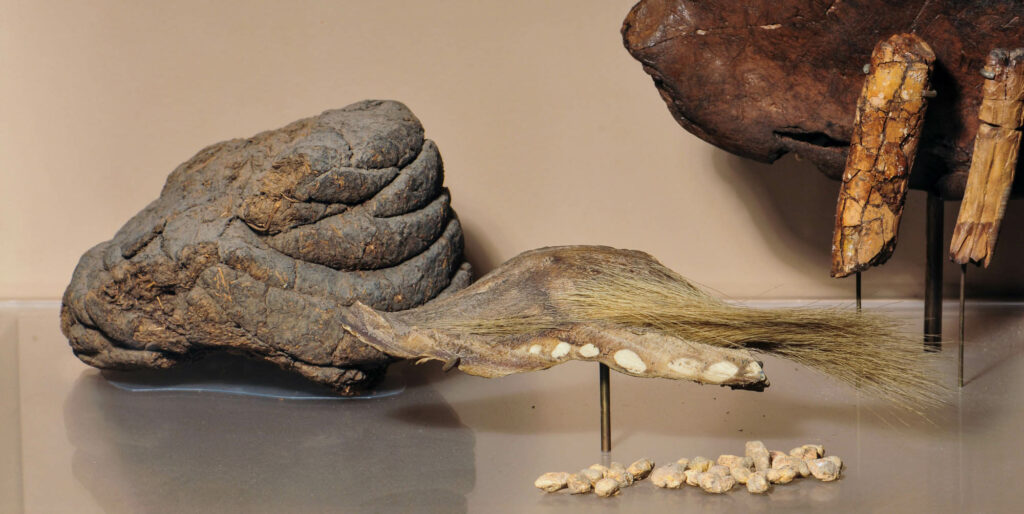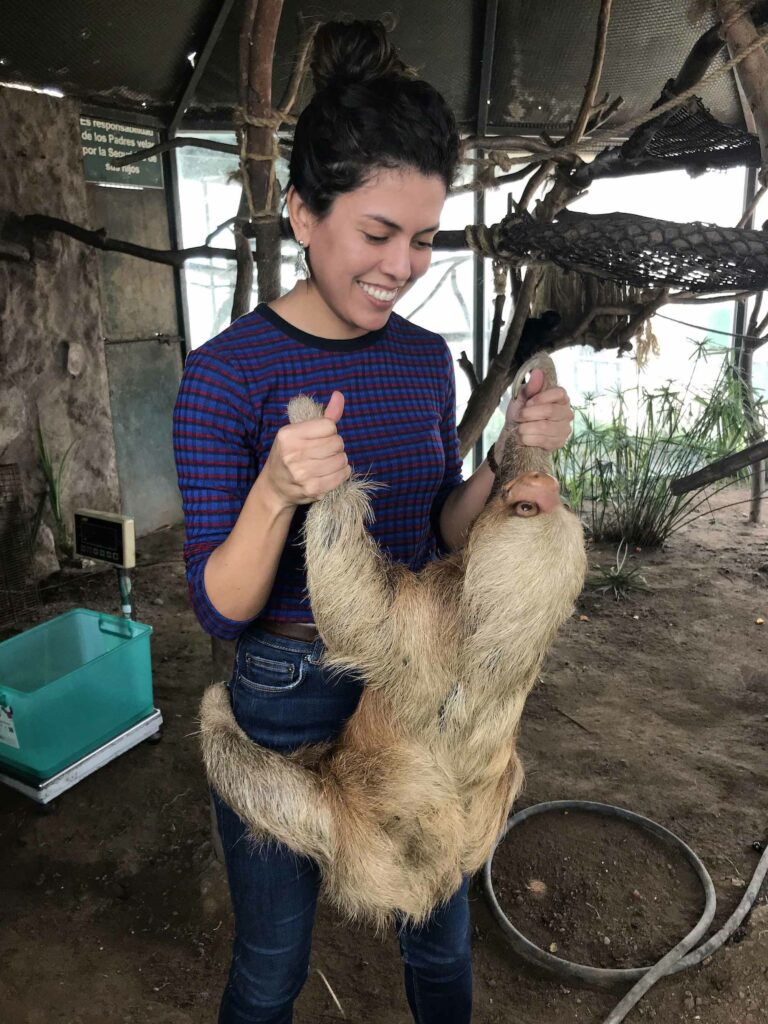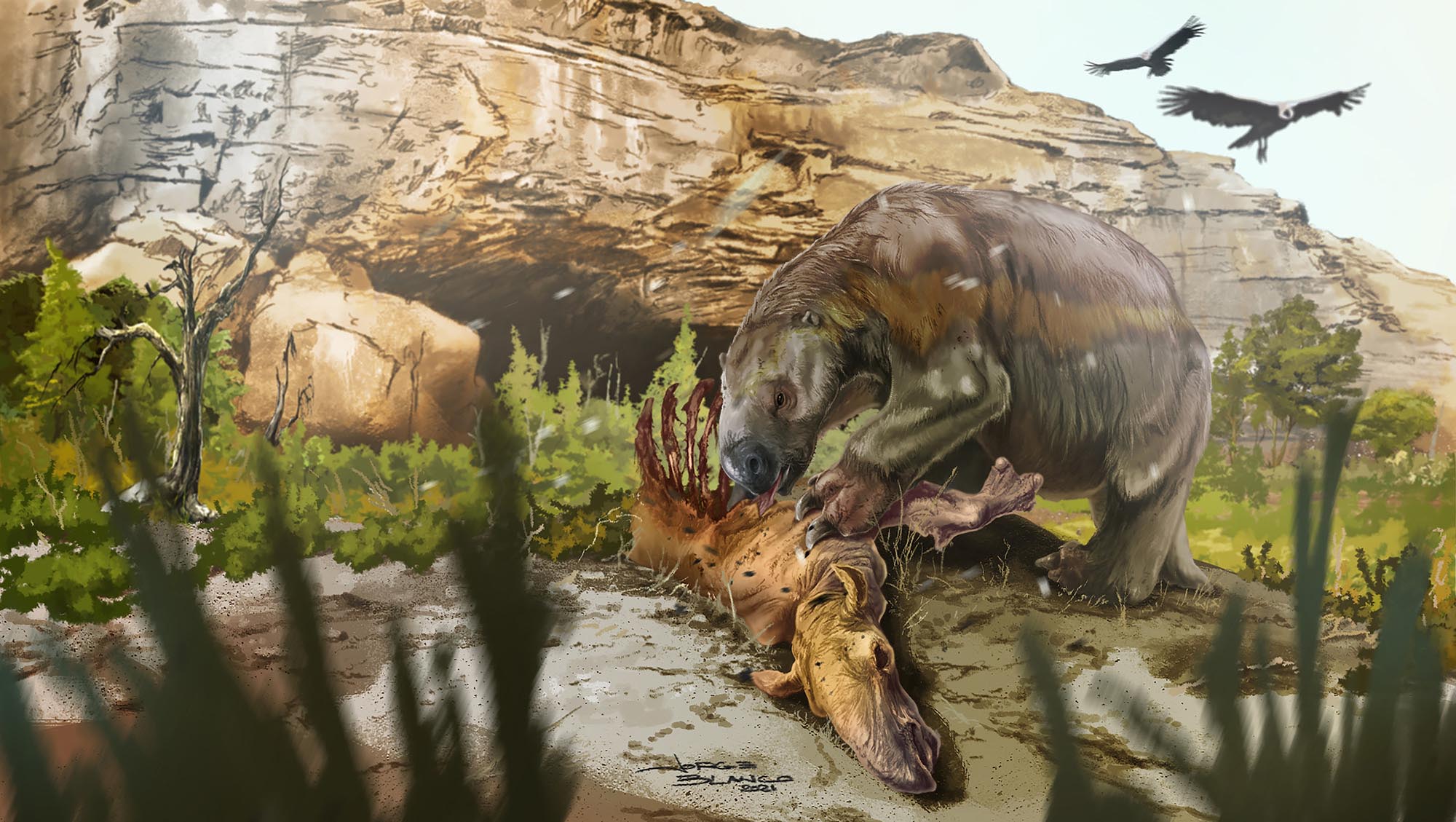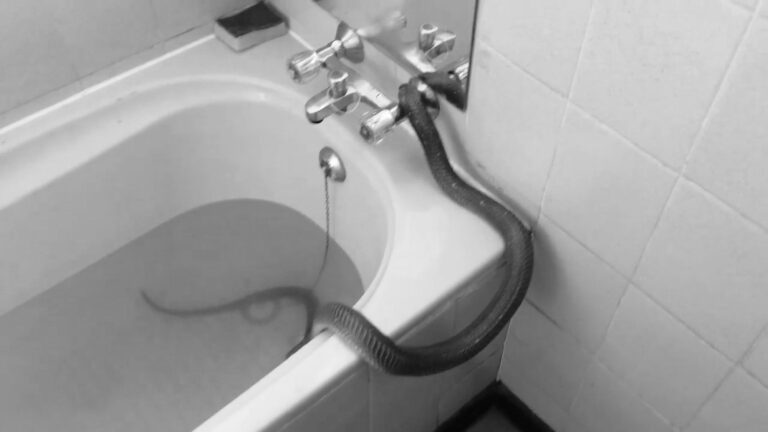A new study has found that an elephant-sized sloth that roamed South America 1.8 million years ago was not a vegetarian like its tree-dwelling descendants.
The American Museum of Natural History led a study that revealed, despite what was previously believed, that the giant sloth known as Mylodon darwinii or ‘Darwin’s ground sloth’ was not vegetarian.
Darwin’s ground sloth is believed to have weighed between 997 and 1,995 kilogrammes (2,200 and 4,400 lbs) and was nearly 3 metres (10 feet) long.
The enormous ground-dwelling sloth roamed South America during the Pleistocene epoch, between 1.8 million years and 12,000 years ago.

As the six living sloth species are all relatively small plant-eating tree-dwellers, experts had previously believed that Mylodon would have had a similar diet despite its monstrous size.
Furthermore, dental characteristics and jaw biomechanics had all been cited as evidence to show that the giant sloth had no interest in eating meat.
However, in the study published yesterday, 7th October, researchers used chemical analysis of amino acids preserved in sloth hair to get clues about their diets in a process known as ‘amino acid compound-specific isotope analysis’.
Julia Tejada, lead author and postdoctoral researcher at the University of Montpellier, said: “Whether they were sporadic scavengers or opportunistic consumers of animal protein can’t be determined from our research, but we now have strong evidence contradicting the long-standing presumption that all sloths were obligate herbivores.”
The chemical analysis works by examining stable nitrogen isotopes that are preserved in body tissues such as hair and fingernails.

By first analysing the amino-acid nitrogen values in a wide range of modern herbivores and omnivores to determine a clear signal of eating a mix of plant and animal food, fossils can then be measured to determine the food they consumed.
This allows palaeontologists to look accurately at the diets of extinct animals and determine whether they were herbivores, omnivores or carnivores.
John Flynn, a co-author of the paper, said: “Prior methods relied solely on bulk analyses of nitrogen and complex formulas that have many untested or weakly supported assumptions.”
“Our analytical approach and results show that many previous conclusions about trophic levels are poorly supported at best, or clearly wrong and misleading at worst.”
Tejada said: “These results, providing the first direct evidence of omnivory in an ancient sloth species, demands a re-evaluation of the entire ecological structure of ancient mammalian communities in South America, as sloths represented a major component of these ecosystems across the past 34 million years.”
The study titled ‘Isotope data from amino acids indicate Darwin’s ground sloth was not an herbivore’ was published in the journal Scientific Reports on 7th October.

To find out more about the author, editor or agency that supplied this story – please click below.
Story By: Peter Barker, Sub-Editor: Lee Bullen, Agency: Newsflash
The Ananova page is created by and dedicated to professional, independent freelance journalists. It is a place for us to showcase our work. When our news is sold to our media partners, we will include the link here.




